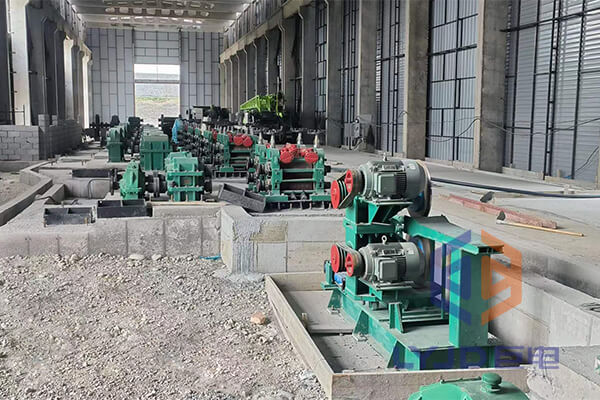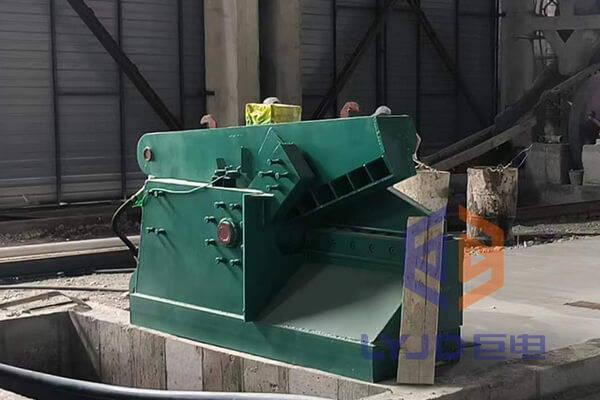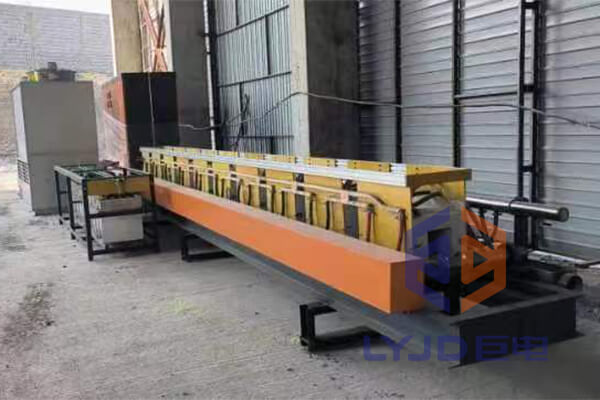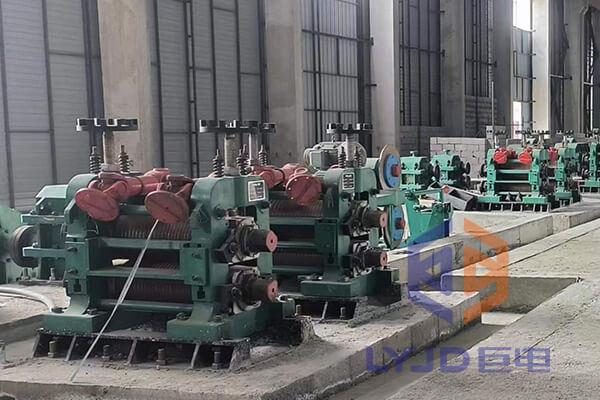A hot steel rolling mill production line is to process raw materials through heating, rolling, cooling, and other processes to produce steel products of different specifications and applications. In this article, you can learn:
Now, let’s talk about them one by one.

The process of steel hot rolling includes the following steps:
Send the continuous casting billets or steel ingots produced by the steelmaking plant to the steel rolling workshop to prepare for hot rolling.
Heating the raw materials to an appropriate temperature, usually between 1100°C and 1300°C, and performing some necessary surface treatments, such as rust removal, oxide removal, etc.
The raw materials are sent to a large rough rolling mill for rough rolling. The rough rolling mill usually consists of more than two roller tables, and its main function is to flatten the raw materials into billets with a certain width and thickness.
The rough-rolled steel billet is sent to an intermediate rolling mill for intermediate rolling. The intermediate rolling mill consists of multiple rollers, which can usually further reduce the thickness of the steel billet and increase its width.
The steel billet after intermediate rolling is further sent to a small finishing mill for finish rolling. Finishing mills usually consist of more roller tables, which can further reduce the thickness of the billet and make its surface smoother.
After finishing rolling, the steel plate will be sent to the cooling equipment for rapid cooling to prevent the steel plate from overheating and deformation.

The cooled steel plate is cut into the required length and then fed to the leveling machine for surface treatment to make the surface smooth.
A steel hot rolling mill production line includes the following main parts:
It includes one or more storage silos for storing raw steel. These silos are often equipped with weighing devices to ensure accurate control of raw material quantities. In the feeding section, raw materials are continuously fed into the production line.

The heating furnace is one of the main components of the hot rolling production line and is used to heat the raw steel to the required temperature for rolling. Heating furnaces usually consist of combustion chambers, heating elements, furnace shells, etc. In the heating furnace, the steel is heated to high temperatures to bring it above the recrystallization temperature, thereby softening and improving plasticity.
One of the most critical components of a hot rolling production line is the rolling mill. In the rolling mill, the thickness of the steel is gradually reduced through rolling layers until it reaches the required width and thickness. A typical hot rolling mill consists of work rolls, support rolls, straightening rolls, etc. By adjusting the spacing of the work rolls, the thickness of the steel can be controlled. The support roll is used to support the work roll and transmit the rolling force. Straightening rollers are used to correct bent or twisted steel produced during the rolling process.

The cooling equipment is used to quickly cool the rolled steel to prevent it from deforming and oxidizing. Cooling equipment usually includes a water cooling section, an air cooling section, and a shot blasting cooling section. The water cooling section is used to cool the steel to a certain temperature, the air cooling section is used to further cool the steel, and the shot blasting cooling section is used to improve the surface quality of the steel.
The finishing equipment is used to straighten, trim, shear, etc. steel to meet the requirements of different specifications and uses. Finishing equipment includes straighteners, shears, balers, etc. Straighteners are used to correct bends or twists in steel, shears are used to cut steel into required lengths, and balers are used to pack steel into certain quantities and specifications.
Generally, conveying equipment is used to transport steel from the production line to the warehouse or downstream processing. Conveying equipment usually includes electric hoists, cranes, flatbed trucks, etc. Electric hoists are used for lifting steel in the factory, cranes are used for lifting across workshops, and flatbed trucks are used for short-distance ground transportation.
In addition, the production line is also equipped with various auxiliary equipment and control systems to ensure stability and efficiency.
For example: Use dust removal equipment to collect dust and waste gas generated during production to protect the environment. Lubrication systems are used to provide lubrication to rolling mills and other rotating parts to reduce friction and wear. Automated control systems are used to achieve automated operation and monitoring of production lines to improve production efficiency.
The advantages of hot rolling steel mainly include:
Hot rolling is a process performed at high temperatures, which can significantly reduce energy consumption and improve production efficiency.
During the hot rolling process, the grains of metals and alloys will be broken and recrystallized, thereby improving their processing performance.
Since hot rolling can reduce energy consumption and improve production efficiency, it can reduce production costs.
Hot rolling is suitable for mass production because of its high production efficiency and ability to meet the needs of various industrial fields.
After hot rolling, the mechanical properties such as strength, plasticity, and toughness of steel are improved, which can meet the needs of various application scenarios.
Hot rolling also has some shortcomings, such as the possibility of delamination within the steel. Thus, it will affect its tensile properties along the thickness direction. In addition, hot rolling cannot very accurately control the mechanical properties required for the product. Also, the quality of the product organization and performance cannot be uniform. Therefore, when selecting a hot rolling process, comprehensive considerations need to be made based on specific application scenarios and needs.
Please send us your request and we reply to you with in 24 hours.
Submit Request